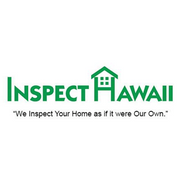
Leaky plumbing fixtures and high humidity bring excess moisture into your home. Mold quickly develops in damp conditions, so you should fix broken pipes and use dehumidifiers in moist areas to make your home less hospitable to its growth. Schedule a mold inspection to determine if the fungus is already inside your space so that professionals can remove the irritant before it causes health problems.
3 Clues You Have a Mold Problems
1. Foul Smells
If you don’t see visible mold, you might notice its pungent aroma. Mold smells like damp fabric, rotting wood, or wet paper. Walk around the house to determine if some areas smell more unpleasant than others.
2. Allergy Attacks
 This contaminant affects people’s health differently, and some individuals might experience intense reactions when exposed, such as asthma attacks, uncontrollable sneezing, and sinus headaches. Long-term exposure can lead to serious health problems, including lung damage.
This contaminant affects people’s health differently, and some individuals might experience intense reactions when exposed, such as asthma attacks, uncontrollable sneezing, and sinus headaches. Long-term exposure can lead to serious health problems, including lung damage.
3. Black Water Spots
Mold might look like patches of dirt or mud and appear black, green, brown, orange, or pink. During a mold inspection, the technician will look for water leaks. If fixtures are damaged, the moisture might have seeped into other surfaces, causing colonies to form on ceilings, walls, and floors. Spores can become airborne and spread, which is why affected areas should be cleaned and disinfected immediately.
If you notice these warning signs and would like a professional mold inspection performed on your home, contact the experienced team at Inspect Hawaii in Honolulu. These skilled technicians use drone cameras, thermal imaging equipment, and state-of-the-art gear to find mold and other dangerous substances in your property. Their dedication to quality work and customer service has earned them an A+ with the Better Business Bureau®. Learn more about their home inspections online, or call (808) 330-2302 to schedule a mold inspection. Read customer reviews on Yelp.
About the Business
Have a question? Ask the experts!
Send your question

